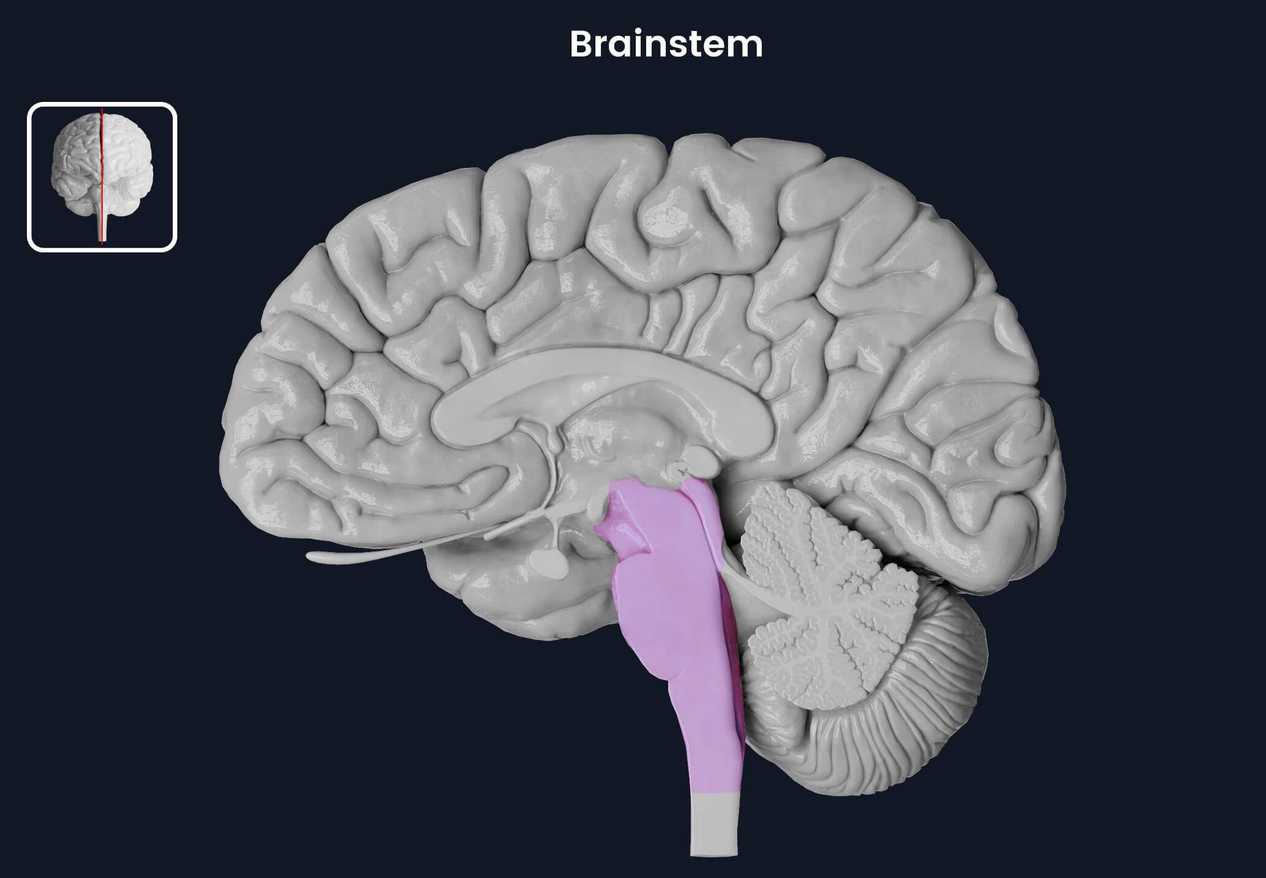The Brainstem: A Complete Guide to Its Parts, Functions, and Anatomy – Essential Roles in Sustaining Life
Imagine your body as a high-precision machine, tirelessly managing critical functions like breathing, heart rate, and sleep without conscious effort. At the core of this operation lies the brainstem, a small but mighty structure that acts as the body’s control tower.
Anatomy of the Brainstem: Breaking Down the Three Key Parts
The brainstem, located at the base of the brain, connects the cerebrum to the spinal cord. It’s divided into three regions, each with distinct roles:
- Midbrain: The midbrain acts as a relay station for visual and auditory information. Its superior colliculi manage eye movement and reflexes to sudden stimuli, like a flinch when something approaches your face. The inferior colliculi process auditory signals, helping you localize sounds. Studies link midbrain damage to visual field deficits and hearing impairments, emphasizing its role in sensory integration. For instance, Parkinson’s disease often involves midbrain degeneration, affecting motor control and coordination.
- Pons: Serving as a bridge between the cerebellum and cerebral cortex, the pons regulates breathing, sleep cycles, and facial movements. It houses nuclei that control facial expressions, chewing, and eye movement. Clinical case studies highlight pons injuries causing irregular breathing patterns, such as Cheyne-Stokes respiration, or disorders like locked-in syndrome, where patients retain consciousness but lose voluntary muscle control. The pons also plays a role in REM sleep, with disruptions linked to narcolepsy and sleep apnea.
- Medulla Oblongata: Often called the “lower brainstem,” the medulla controls autonomic functions critical for survival, including heart rate, blood pressure, and swallowing. It contains the cardiovascular center, which adjusts heart rate and blood vessel dilation to maintain circulation. Medulla damage, accounting for ~30% of brainstem injury cases, can lead to life-threatening conditions like cardiorespiratory arrest. Research shows that even minor medulla lesions disrupt vital signs, underscoring its non-negotiable role in homeostasis.

Brainstem Functions: The Body’s Invisible Powerhouse
Beyond its structural components, the brainstem automates vital functions and integrates sensory-motor signals:
- Vital Functions Automation: The brainstem’s medulla and pons work tirelessly to regulate breathing, heart rate, blood pressure, digestion, and reflex actions like coughing, sneezing, and vomiting. For example, the medulla’s respiratory centers adjust breathing depth and rate based on CO₂ levels, ensuring oxygen supply matches metabolic demands. The World Health Organization notes that respiratory control disorders, often tied to medulla dysfunction, affect millions globally, highlighting the brainstem’s global health impact.
- Sensory and Motor Integration: The brainstem acts as a neural highway, transmitting signals between the brain and body. Ascending pathways carry sensory information—pain, temperature, touch—to the thalamus for processing, while descending pathways relay motor commands from the cortex to muscles. Disruptions here can cause numbness, paralysis, or chronic pain. Neuroscience textbooks detail the reticulospinal and vestibulospinal tracts, which coordinate posture and gait, with implications for conditions like Parkinson’s disease and multiple sclerosis.
The Brainstem’s Role in Disease and Disorders
The brainstem’s vulnerability to injury and disease makes it a focal point in clinical neurology:
- Brainstem Injuries and Conditions: Brainstem strokes, tumors, and congenital malformations like Chiari malformation can devastate its function. Locked-in syndrome, often caused by pons lesions, leaves patients paralyzed but mentally intact, relying on eye blinks for communication. Recovery rates for brainstem strokes vary; studies suggest younger patients with smaller lesions have better outcomes, though rehabilitation is crucial for regaining function. Tumors like gliomas or acoustic neuromas may require surgical resection, with risks tied to lesion location and size.
- Diagnostic Tools and Treatments: MRI and CT scans are gold standards for assessing brainstem pathology, offering detailed images of tumors, strokes, or swelling. Treatments range from surgery to neurostimulation therapies. Recent advances include deep brain stimulation (DBS) for movement disorders and vestibular rehabilitation for balance issues. Neuroplasticity studies show the brainstem can adapt post-injury, with intensive therapy aiding recovery in conditions like ataxia.
Brainstem and Daily Life: Surprising Connections
The brainstem’s influence extends beyond survival to daily activities:
- Sleep-Wake Cycles and Alertness: The reticular activating system (RAS), a network of brainstem nuclei, regulates wakefulness and sleep transitions. Dysfunction here contributes to sleep disorders like insomnia or narcolepsy. For instance, medulla-pons lesions disrupt REM sleep, causing vivid dreams or sleep paralysis. Research links sleep apnea to medulla dysfunction, with CPAP therapy improving oxygenation and quality of life.
- Balance and Coordination: The brainstem works with the cerebellum to maintain posture, balance, and smooth movement. Degeneration in these pathways, as seen in Parkinson’s disease, leads to tremors, rigidity, and gait disturbances. Studies show that elderly individuals with brainstem atrophy face higher fall risks, underscoring the need for balance training and fall prevention strategies.
Future Research and Innovations
The brainstem remains a frontier for neuroscience, with emerging technologies promising breakthroughs:
- Emerging Technologies: Brain-computer interfaces (BCIs) are being tested to help paralyzed patients communicate via brain signals, bypassing damaged motor pathways. Neurostimulation techniques, like transcranial magnetic stimulation (TMS), show promise in treating depression and chronic pain by modulating brainstem activity. Recent clinical trials explore stem cell therapies for brainstem repair, though long-term efficacy remains under investigation.
- Unanswered Questions: Researchers are probing the brainstem’s role in consciousness and emotional regulation. Questions linger about its involvement in pain perception, stress responses, and even spiritual experiences. Advances in imaging and molecular biology may unlock these mysteries, paving the way for novel treatments.
The brainstem is a testament to the body’s evolutionary ingenuity, silently orchestrating life’s essential functions. From its three-part anatomy to its role in diseases and daily life, its importance cannot be overstated. Protecting brainstem health through lifestyle choices—adequate sleep, stress management, and avoiding head trauma—is paramount. If you experience unexplained symptoms like dizziness, breathing issues, or balance problems, consult a healthcare provider promptly.
Did you find this guide to the brainstem useful? If you’re curious about how the brain coordinates movement and vital functions, check out our comprehensive guide to the cerebellum and the telencephalon to explore more about the brain’s essential roles.

